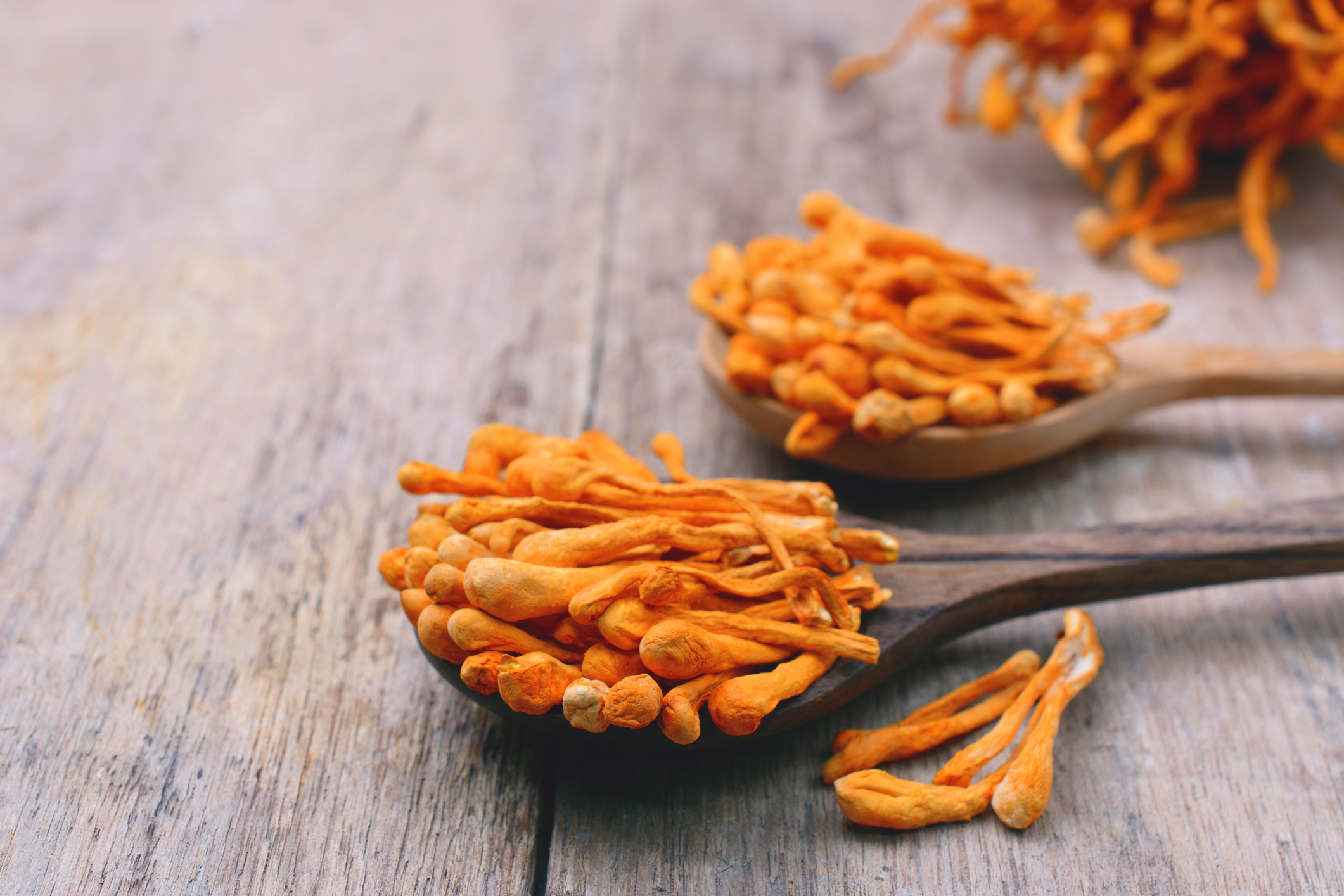

Mushrooms are among the most powerful botanicals known to man. Some are more popular or well-known than others, but at the moment, almost everyone is hearing about one fungus in particular: cordyceps — thanks to HBO’s hit show, The last of us.
But should we really be worried about this fungus among us? Could the future of humanity be in the hands of a zombifying fungus?
While cordyceps is quite adept at hijacking certain bugs in a gruesome way — attaching spores that grow tendrils throughout its host’s body and using it to travel and distribute more fungus spores — you should know what it does to humans is quite different…
Cordyceps’ history with (hopefully not the last of) us
There are literally hundreds of medicinal mushroom species. In fact, there are around 600 species of cordyceps alone.
But cordyceps, though commonly referred to as a mushroom, is technically not one…
Because of that parasitic habit of growing on insects, they are considered entomopathogenic fungi. Don’t get hung up on the technicalities though — cordyceps has a long history with humans as a healing, functional food.
Mushrooms are rich sources of unique health-promoting compounds and have been used in Chinese medicine and other traditional healing systems for thousands of years — and cordyceps is near the top.
One family of carbohydrates found in mushrooms is beta-glucans. Carbohydrates can fuel the body in many ways, but beta-glucans have a particular affinity for immune cells. They stimulate macrophages, lymphocytes, T-cells and Natural Killer cells, among others. They are especially focused on our innate immunity, the immune system’s first responders.
But mushrooms do more than boost your immunity; they seem to modulate it, essentially “training” immune cells to respond appropriately to pathogens, toxins, cancerous cells and other dangers. Medicinal mushrooms are unique to this purpose, as they can both boost immunity and help calm an over-active autoimmune response. This can be quite helpful when addressing psoriasis, rheumatoid arthritis, lupus and other autoimmune conditions.
Cordyceps specifically, are reported to enrich bone marrow and energize immune system cells — macrophages, phagocytes and NK cells. They also have demonstrated anti-tumor activity. Like reishi, cordyceps support athletic performance, increasing cellular energy production and oxygen utilization. They also improve heart function by reducing LDL (bad cholesterol) and increasing HDL (the good variety).
Using Cordyceps
Most mushrooms we enjoy eating are easy to incorporate in dishes. Button mushrooms are a favorite to saute. Portobello is a large delicious, beefcake-style of a mushroom that works great as a meat substitute.
But cordyceps, since they grow like slim tendrils are often used more efficiently as a powder, which is popularly used in supplements and teas.
You can take the tendrils, referred to a “fruited bodies” and boil them in water to make cordyceps tea. But just knowing those tendrils fruited out of an insect body is enough to turn me off of that idea.
Should you be worried about becoming cordyceps spawn?
Rebeca Rosengus, associate professor and behavioral ecologist at Northeastern University, explained in BuzzFeed News that it’s not an immediate concern…
“The fact that we don’t have a pathogen that has been able to come up with a strategy to hijack our minds does not mean that it’s not a possibility at some point.”
But right now, cordyceps can not survive the hotter temperatures of the human body, so we have that going for us.
